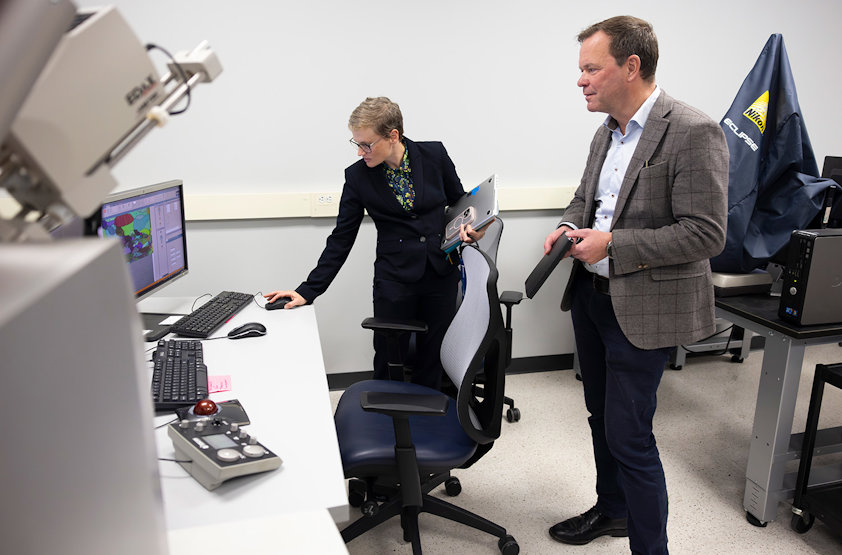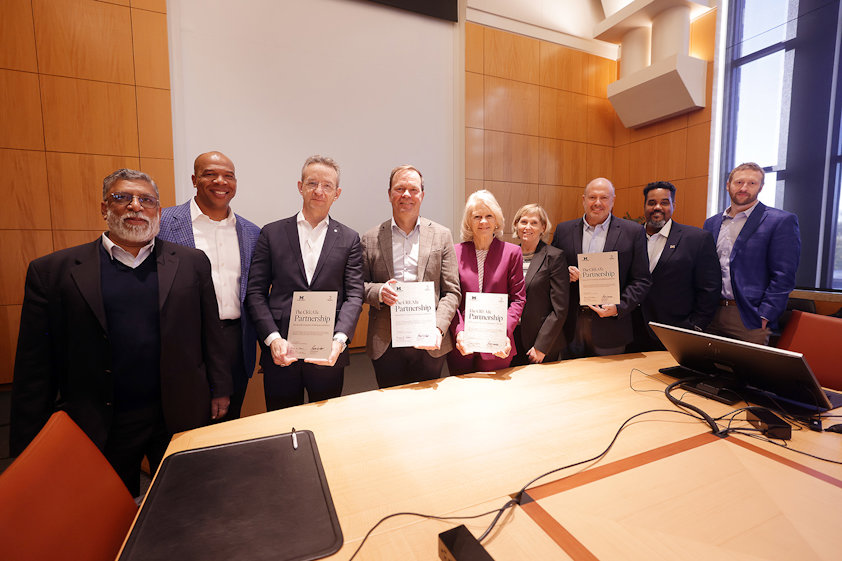The collaboration establishes the CREATe (Center for Recycling, Extrusion and Aluminum Technology) partnership and aims to strengthen the U.S. supply chain through innovation.
The initiative will focus on developing alloys that retain strength and performance across multiple recycling cycles, addressing key challenges such as iron based impurities. Three research teams will explore innovative approaches including electric current assisted intermetallic refinement, composition enhanced solidification and computational alloy design.
“Hydro was founded 120 years ago at the intersection of a commercial visionary and a brilliant researcher. That spirit still defines us. Industrial progress happens when industry and science work together to solve problems and develop new solutions. I look forward to following this collaboration between Hydro and the University of Michigan, and to seeing it drive new advances in aluminium recycling and alloy innovation,” says Eivind Kallevik, President and CEO of Hydro.
Research and development to improve circularity
Hydro’s technical teams in Cassopolis and Troy, Michigan, work closely with customers to develop specialized alloys designed for crash management and structural applications for the automotive industry. By combining deep materials expertise with next generation recycling technology, Hydro is helping customers across sectors reduce emissions, improve circularity and future proof their supply chains.
This collaborative approach and commitment to innovation is also recognized by Hydro’s academic partners.
"This partnership brings together top minds in materials science and manufacturing to expand what's possible in recycling aluminium, a metal that packs incredible strength into a lightweight form and has become one of the world's most widely used engineering materials. Both Michigan Engineering and Hydro see tremendous potential in this research and this region to shape a more resilient future together,” says Karen A. Thole, the Robert J. Vlasic Dean of Engineering at the University of Michigan.

Hydro’s expanding U.S. presence and global network
Hydro’s research partnership with the University of Michigan builds on the company’s expanding U.S. footprint and commitment to innovation.
Over the past five years, Hydro has invested more than USD 1 billion to strengthen domestic manufacturing in the U.S., including a new recycling plant and R&D center in Cassopolis, Michigan, and a modern and advanced extrusion press with strengthened recycling capacity in Cressona, Pennsylvania, enhancing recycling, extrusion, and R&D capabilities.
Hydro’s R&D network is global and includes in house scientists, university collaborations and R&D institutes.
This integrated model ensures that innovation is rapidly translated from lab to production, enabling customers in automotive, transportation, consumer goods, and building systems to meet increasingly demanding performance and sustainability targets.

About Hydro in the United States
Hydro is a leading aluminium company and largest producer of extruded aluminium in the U.S., contributing to the nation’s industrial strength and economic growth. Hydro supplies products to nearly every market sector including automotive, transportation, building and construction, general engineering, defense, and consumer durables.
While Hydro has been present in the U.S. for several decades, many of our aluminium facilities have been supporting American industry for much longer. Hydro’s extrusion site in Cressona, Pennsylvania, was originally built in 1942 to support the war effort. Today, the facility is the largest of its kind outside of China, with more than 1,000 employees and 1.7 million square feet under roof.
Hydro’s coast to coast U.S. operations includes 22 manufacturing sites across 17 states, including 10 aluminium recycling facilities. Hydro has more than 6,000 employees in the U.S., making it the largest Norwegian employer in the country.
About University of Michigan College of Engineering
The University of Michigan College of Engineering is home to 13 top ranked departments embedded in one of the top U.S. public research institutions. The College’s mission is to educate, innovate, and lead by fostering interdisciplinary collaboration, advancing knowledge, and preparing engineers to solve society’s greatest challenges. Today, Michigan Engineers are advancing the frontiers of fields as diverse as microelectronics and semiconductors, transportation and mobility, robotics, advanced materials, energy, health, security and beyond. An alumni base of nearly 100,000 spans the globe.
Published: October 29, 2025

